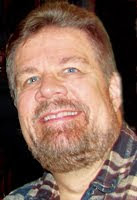Shades of meaning. A child quibbles over responsibility for a spilt glass of Kool-Aid, twisting reality around his fear of punishment. An artist alters the mood of a painting by subtly brushing the canvas with delicate refinements of color and shadow detail.
A writer has the ability to shift reality, to set a mood: Word choice, adjectives and adverbs, tense, action and passivity, punctuation – even rhyme, pace and onomatopoeia. These are the tools a writer uses to express shades of meaning.
When I write, and when I edit others’ copy, I prefer to offer “options” because right and wrong answers don’t exist in writing – apt solutions and inept solutions, yes … but no right or wrong. But an “option” serves the purpose of identifying the exact point where a life preserver needs to be thrown into an ocean of words, phrases, exposition and analogies.
Consider this paragraph:
A writer has the ability to shift reality, to set a mood: Word choice, adjectives and adverbs, tense, action and passivity, punctuation – even rhyme, pace and onomatopoeia. These are the tools a writer uses to express shades of meaning.
When I write, and when I edit others’ copy, I prefer to offer “options” because right and wrong answers don’t exist in writing – apt solutions and inept solutions, yes … but no right or wrong. But an “option” serves the purpose of identifying the exact point where a life preserver needs to be thrown into an ocean of words, phrases, exposition and analogies.
Consider this paragraph:
At the age of 22, I was hired at the Trinidad Chronicle-News – and later at the Colorado Springs Sun and Vail Daily – as a reporter. This was the pre-Watergate era. This was before egos of journalists grew so large as to crave the superstardom of Woodward and Bernstein. This was before journalism soured in the wake of supply and demand – too many young reporters willing to work for too little money, placing far to few demands on their talent. Salaries plummeted. Many of the best and brightest writers fled into public relations, advertising and marketing where growing corporations were still willing to pay top dollar for talent. In college (these were the days of flower-powered hippies living in geodesic domes), students pursuing a PR/Advertising track were “selling out to The Man.” A decade later, it got hard to make a living – and harder still to bear the inflated egos – and I, too, swallowed my pride and became a PR flak. I found, however, those PR flacks I’d snubbed all those years did more than write the occasional news release. They worked hard – damnably hard. The reality from the other side of the mirror was a wake-up call … the first of many significant challenges that would follow, in the 1980s and 1990s, to the blindered assumptions of my youth. Still, much of the hard work focused on networking, building relationships, image awareness and “spin.” I found myself spending less and less time doing what I truly loved … writing. But it would be a quarter century – a new millennium and then some – before I would return to that mistress of my youth.
Alternatively, one might write:
Out of college, I became a daily newspaper reporter. When journalism started to sour, I became a PR flak. I discovered a great deal more flesh and substance in the world of media relations than I might have imagined from the outside looking in. Still, I wasn’t doing anywhere near the amount of writing I’d imagined, in the days of my youth, that I would. Today, 25 years later, I have decided to return to those roots.
Two paragraphs. Largely the same take-away: Boy meets career, Boy loses career, Boy realizes what he has lost, Boy returns to his true love. Yet the length, depth and tone of the two paragraphs could hardly be more different.
Two paragraphs, neither right, neither wrong. Just different. But they do share common bonds: Good grammar, good spelling, interesting syntax and pacing along a path from Point A to Point B. Consider whether one passage affects you differently, carries a different impact, or leads you to a different conclusion about the writer and his professions. Each passage follows most of the rules; each violates a few others. But it’s apparent that the writer knew what the rule was, before breaking it. It’s bad grammar? That word doesn’t really exist? The writer knows that, but had a long discussion with himself and decided that writing the phrase the “wrong” way was better than getting it “right.”
Two paragraphs, neither right, neither wrong. Just different. But they do share common bonds: Good grammar, good spelling, interesting syntax and pacing along a path from Point A to Point B. Consider whether one passage affects you differently, carries a different impact, or leads you to a different conclusion about the writer and his professions. Each passage follows most of the rules; each violates a few others. But it’s apparent that the writer knew what the rule was, before breaking it. It’s bad grammar? That word doesn’t really exist? The writer knows that, but had a long discussion with himself and decided that writing the phrase the “wrong” way was better than getting it “right.”
These are the sorts of discussions good writers carry on inside them every day. Have some. They’re fun.

No comments:
Post a Comment